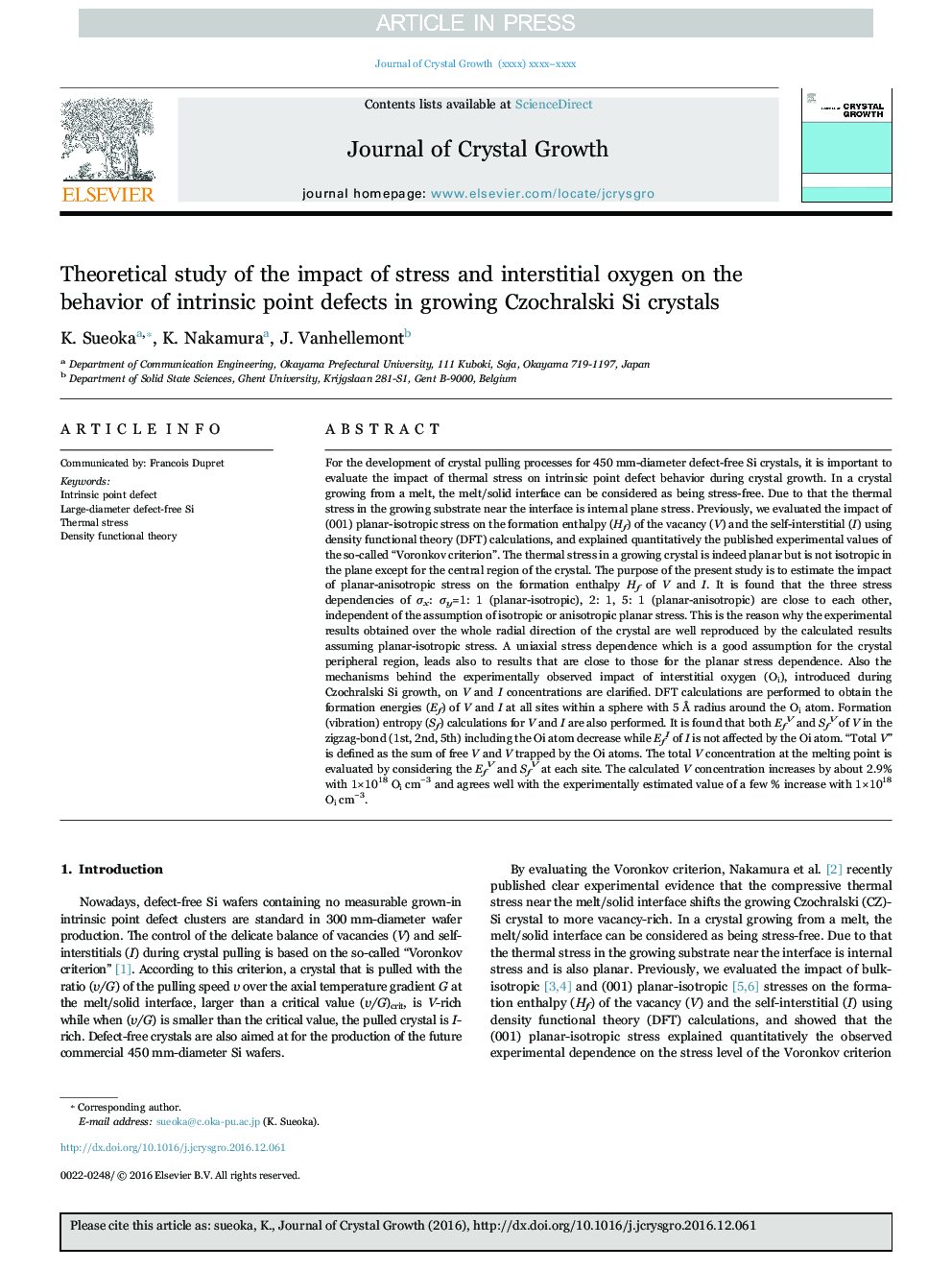| Article ID | Journal | Published Year | Pages | File Type |
|---|---|---|---|---|
| 5489228 | Journal of Crystal Growth | 2017 | 7 Pages |
Abstract
For the development of crystal pulling processes for 450Â mm-diameter defect-free Si crystals, it is important to evaluate the impact of thermal stress on intrinsic point defect behavior during crystal growth. In a crystal growing from a melt, the melt/solid interface can be considered as being stress-free. Due to that the thermal stress in the growing substrate near the interface is internal plane stress. Previously, we evaluated the impact of (001) planar-isotropic stress on the formation enthalpy (Hf) of the vacancy (V) and the self-interstitial (I) using density functional theory (DFT) calculations, and explained quantitatively the published experimental values of the so-called “Voronkov criterion”. The thermal stress in a growing crystal is indeed planar but is not isotropic in the plane except for the central region of the crystal. The purpose of the present study is to estimate the impact of planar-anisotropic stress on the formation enthalpy Hf of V and I. It is found that the three stress dependencies of Ïx: Ïy=1: 1 (planar-isotropic), 2: 1, 5: 1 (planar-anisotropic) are close to each other, independent of the assumption of isotropic or anisotropic planar stress. This is the reason why the experimental results obtained over the whole radial direction of the crystal are well reproduced by the calculated results assuming planar-isotropic stress. A uniaxial stress dependence which is a good assumption for the crystal peripheral region, leads also to results that are close to those for the planar stress dependence. Also the mechanisms behind the experimentally observed impact of interstitial oxygen (Oi), introduced during Czochralski Si growth, on V and I concentrations are clarified. DFT calculations are performed to obtain the formation energies (Ef) of V and I at all sites within a sphere with 5Â Ã
radius around the Oi atom. Formation (vibration) entropy (Sf) calculations for V and I are also performed. It is found that both EfV and SfV of V in the zigzag-bond (1st, 2nd, 5th) including the Oi atom decrease while EfI of I is not affected by the Oi atom. “Total V” is defined as the sum of free V and V trapped by the Oi atoms. The total V concentration at the melting point is evaluated by considering the EfV and SfV at each site. The calculated V concentration increases by about 2.9% with 1Ã1018 Oi cmâ3 and agrees well with the experimentally estimated value of a few % increase with 1Ã1018 Oi cmâ3.
Related Topics
Physical Sciences and Engineering
Physics and Astronomy
Condensed Matter Physics
Authors
K. Sueoka, K. Nakamura, J. Vanhellemont,
